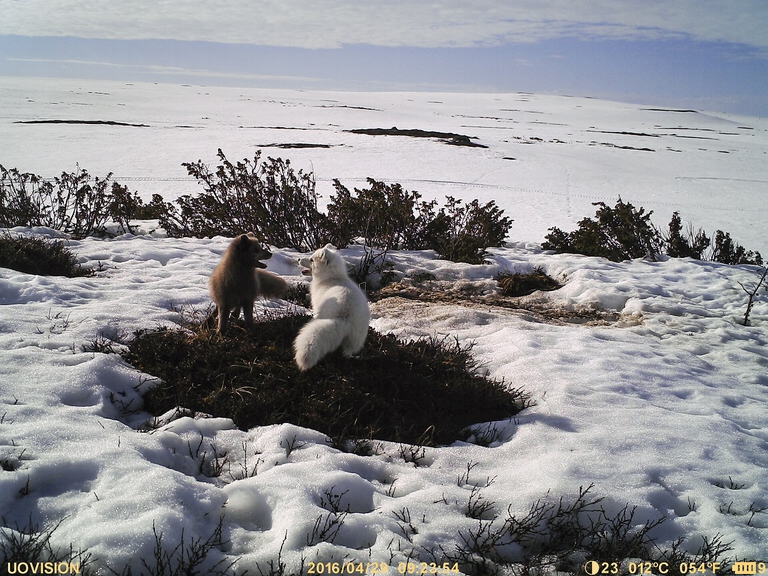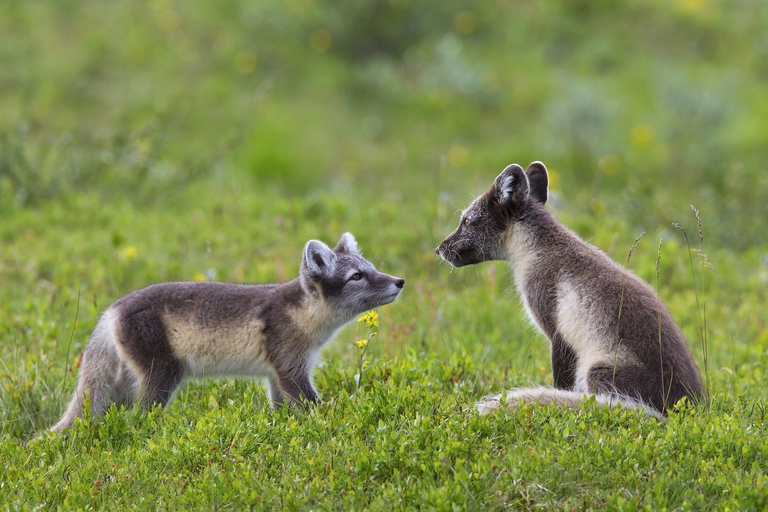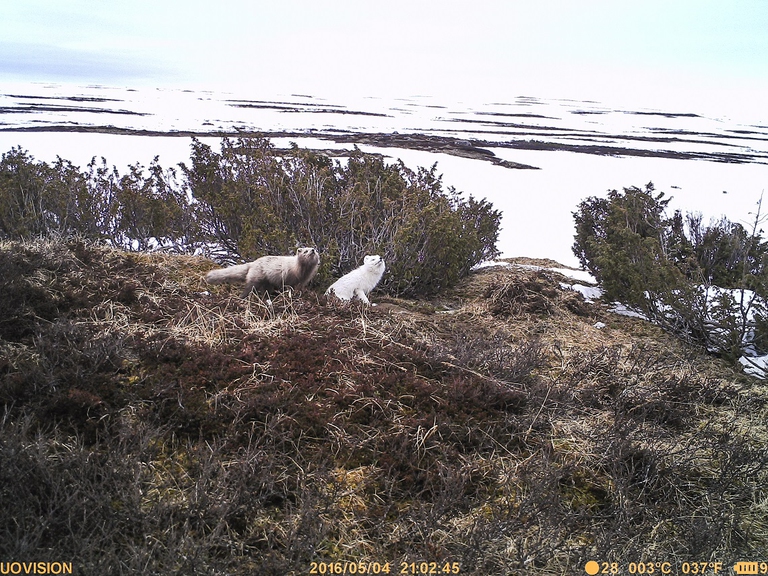
Our species took its first steps in a world covered in trees. Today, forests offer us sustenance, shelter, and clean the air that we breathe.
Dopo venti anni di assenza le fototrappole del Wwf hanno ripreso due volpi artiche che lasciano intravedere un futuro per la specie in Scandinavia.
The last sighting of the enchanting snout of an Arctic fox (Alopex lagopus) dated back to 1996. But this small Nordic mammal has been caught on camera by WWF Finland for the first time in 20 years.
The species, which has adapted to rigid Arctic temperatures, boasts incredible camouflage skills and lives in the circumpolar area of the northern hemisphere. Despite the fact that Arctic foxes are still abundant in Russia, Canada and Alaska, they’re gradually disappearing from Greenland, Iceland and Scandinavia.
According to a study conducted by the International Union for the Conservation of Nature (IUCN), the causes of the fox species’ decline are linked to climate change, which is affecting the Arctic more than other regions. Rising temperatures lead to milder winters, which have a knock-on effect on biodiversity and cause the tundra to be replaced by boreal forests, unfit for Arctic foxes – resulting in habitat loss. In addition, climate change is also causing a decline in lemmings and voles, the foxes’ main prey.
Another cause of the species’ decline is increasing competition with red foxes, which are larger, more aggressive and adaptable than their Arctic cousins. Many cases of red foxes preying on Arctic fox cubs and adults have been documented over the years.
WWF’s camera traps have captured hundreds of daily images of a couple of Arctic foxes – “one white and one dark-furred,” says Petteri Tolvanen, Programme Manager for WWF Finland. “The two were seen playing together, and because the breeding season was close, we could infer that they were attempting to breed”. Unfortunately the couple hasn’t bred, but the fact they’ve returned to an area once roamed by plenty of Arctic foxes, occupying old dens, gives us a glimmer of hope for the future.
Siamo anche su WhatsApp. Segui il canale ufficiale LifeGate per restare aggiornata, aggiornato sulle ultime notizie e sulle nostre attività.
![]()
Quest'opera è distribuita con Licenza Creative Commons Attribuzione - Non commerciale - Non opere derivate 4.0 Internazionale.
Our species took its first steps in a world covered in trees. Today, forests offer us sustenance, shelter, and clean the air that we breathe.
Poachers in Africa are encroaching on wildlife land and killing rhinos in travel hot spots now devoid of visitors due to the coronavirus pandemic.
La nave sarà varata nel 2020 e ospiterà le strumentazioni più all’avanguardia per la ricerca di plastica nel mare. Il progetto realizzato con il Wwf.
Actor and environmental activist Leonardo DiCaprio has contributed two million dollars to a fund to protect Virunga National Park in Congo from threats such as terrorism, the coronavirus and poaching.
For the first time in seventeen years, Iceland’s two main whaling companies won’t resume whale hunting. The announcement concerns this year’s season but could carry into the future.
The relationship between the coronavirus and wildlife is complex: while the pandemic may lead to a reduction in the illegal trade in wild animals, it may also encourage it in other respects.
The largest coral reef in the world is severely threatened by climate change, but researchers are developing strategies that could contribute to saving the Great Barrier Reef.
NGO Free the Bears has opened a mountain sanctuary for moon bears in Laos. With the government’s help, it aims to close all bile farms by 2022.
Seychelles have extended its marine protected area, which now covers over 400,000 square kilometres, an area larger than Germany.










